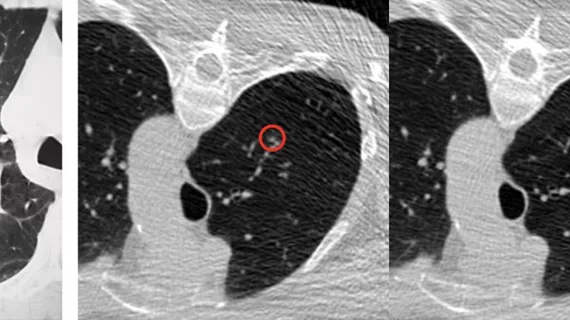Reducing image-guided lung biopsy complications
A biopsy tract hemocoagulase injection after transthoracic lung biopsy has the potential to significantly reduce post-procedural complications.
That’s according to new work published in Clinical Radiology that compared the outcomes of lung biopsy patients who did and did not receive the injection. Experts found that the patients who received the injection after undergoing CT-guided needle biopsy recorded a statistically significant reduction in both pneumothorax and pulmonary hemorrhage compared to their peers.
“Hemocoagulase is a topical hemostatic agent used in surgical procedures and tooth extractions to reduce bleeding. It has the advantages of low cost, wide availability, and minimal preparation time,” corresponding author X. Ran, of the Department of Radiology at Chongqing General Hospital in China, and co-authors explained.
While its use has been proven in surgery and dentistry, authors of the study confided that they were unaware of any research regarding its effectiveness in percutaneous transthoracic lung biopsy (PTLB) as a means of reducing adverse post-procedural side effects.
For their research, the experts conducted a retrospective analysis of patients who had undergone PTLB between January 2020 and March 2021. The patients were divided into two groups—one group who did not receive the hemocoagulase injection following their biopsy and one group who did.
Out of 100 patients, pneumothorax and pulmonary hemorrhage occurred in 15% and 13%, respectively. Compared to the group who did not receive the injection, experts observed significantly reduced complication rates of 8% and 6%. These improvements were consistent regardless of the patients' positions, lesion location or pathological results.
Summarizing their conclusions on efficacy, the authors wrote:
“Hemocoagulase can promote blood coagulation and reduce bleeding in the biopsy tract. The formation of blood clots can also facilitate the closure of the biopsy tract, thereby reducing the incidence of postoperative pneumothorax and pulmonary hemorrhage.”
More on image-guided biopsy:
25% of patients undergoing transthoracic needle biopsy experience complications
Quality improvements reduce biopsy wait times for patients with suspicious breast MRIs
Radiology-pathology meetings lead to quicker definitive diagnoses in discordant biopsy cases
ACR's thyroid imaging reporting and data system 'dramatically' reduces unnecessary nodule biopsies
Reference:
S. Zhou, F. Luo, M. Gu, X. Lu, Y. Xu, R. Wu, J. Xiong, X. Ran. Biopsy-tract haemocoagulase injection reduces major complications after CT-guided percutaneous transthoracic lung biopsy. Clinical Radiology, 2022.

